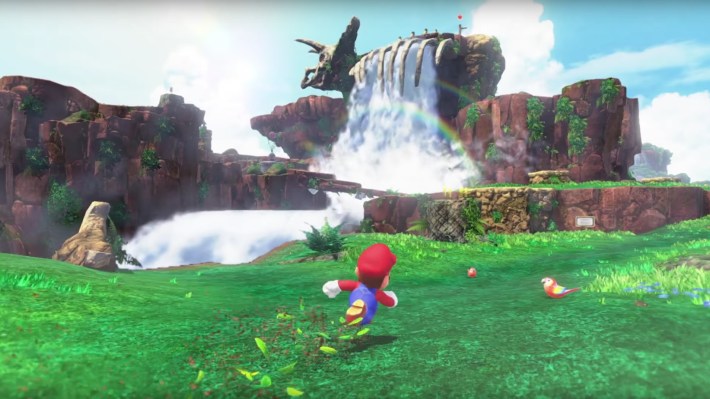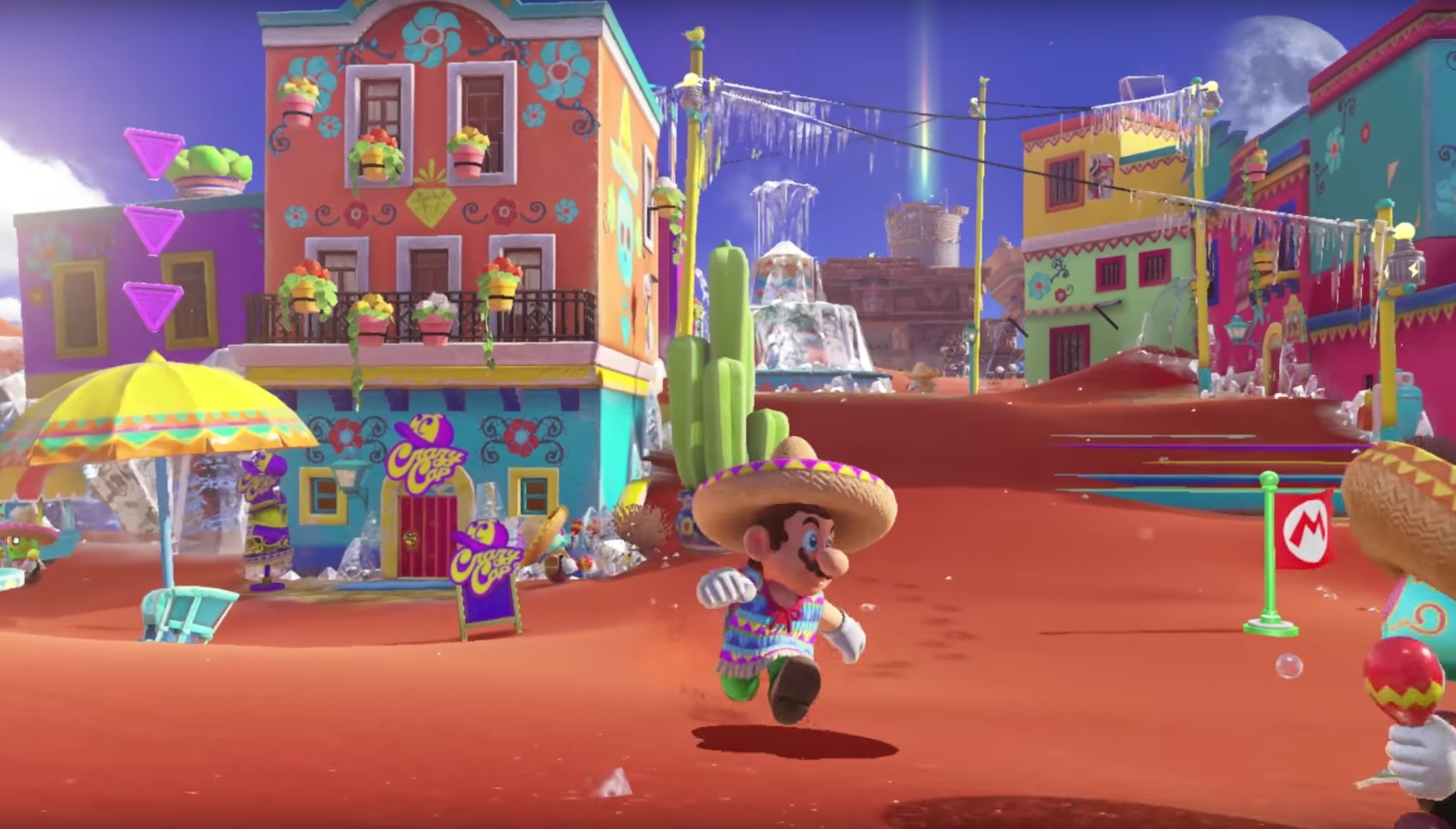It’s almost unnerving how good Nintendo is at its job — at least, when the wizards there choose to apply themselves. Super Mario Odyssey is a embarrassment of riches, never failing to surprise for hours and hours and maintaining an unflaggingly positive feeling the entire time. It’s an essential for all Switch owners, and highly recommended for any gamer with a heart and a memory.
Super provenance
When gamers rushed to buy the Switch earlier this year, it was, in the near term at least, on the promise of a Zelda game that looked to be the freshest in years, yet at the same time return to the series’ roots. It achieved that in spades, leaving recent Zeldas and AAA open-world games in the dust. It did it largely by giving its players the freedom to go wherever they wanted and do whatever they wanted — and making sure that wherever they went and whatever they did, it was fun and rewarding.
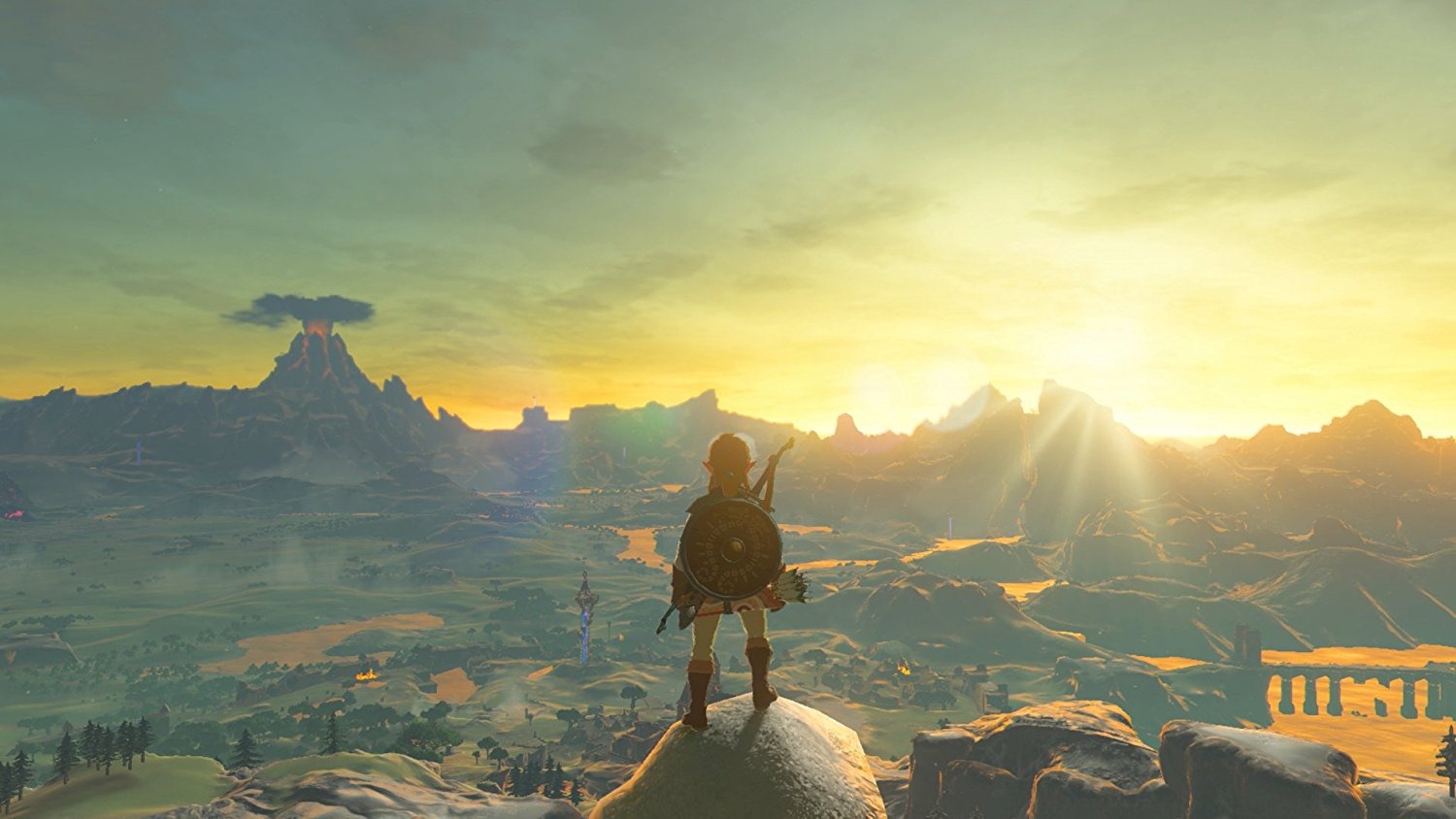 In a way it reminded me more of the original Zelda than any of its successors; the extreme freedom afforded the player in the first game turns out to have been a concept employed well ahead of its time.
In a way it reminded me more of the original Zelda than any of its successors; the extreme freedom afforded the player in the first game turns out to have been a concept employed well ahead of its time.
Super Mario Odyssey succeeds in a very similar way, feeling both brand new and comfortingly familiar, while setting the bar for gameplay on the system. It does this, however, not by reaching back to the NES (at least, not most of the time) or even SNES, but the N64.
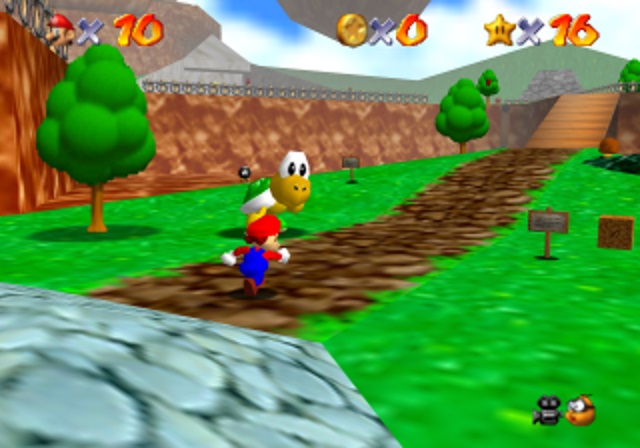 Those of you who have played Mario 64 likely remember what a revelation it was at the time. Not just the controls, which were the first to really get 3D movement right (and arguably still among the best), but in the density of gameplay ideas: locations, enemies, obstacles, and ways of combining those things to make each stage feel new and fresh.
Those of you who have played Mario 64 likely remember what a revelation it was at the time. Not just the controls, which were the first to really get 3D movement right (and arguably still among the best), but in the density of gameplay ideas: locations, enemies, obstacles, and ways of combining those things to make each stage feel new and fresh.
Its collection of mini-worlds, each hiding a handful of stars allowing further progression, laid the foundation for future 3D Mario games, notably Super Mario Galaxy and its sequel. But those were more like hybrids between Super Mario World and Mario 64 than a real successor. Their themed worlds, each stage unique in its challenges, to be tackled more or less in linear order — it’s a winning formula and they’re great games in their own right. Similar plaudits can be awarded to Super Mario 3D Land and World, which heavily favored the SMW side of the family.
Now Nintendo can proudly say that it has delivered a true-blue sequel to Mario 64, and while there is little surprising about the overarching structure and style of the game, it is more surprising on a moment-to-moment basis than any game in recent memory. (That’s part of why this review is short on screenshots and videos; I don’t want to spoil a thing.)
It’s-a new Mario, again
First, though, let’s dispense with the ordinary review stuff.
In Super Mario Odyssey, you travel around the world in pursuit of Bowser and the perennially abducted Peach, collecting “Power Moons” to fuel your hat-shaped craft, the titular Odyssey. There are coins, piranha plants, Toad, and all the usual fixins.
The game controls like a dream second by second, though it may take a bit to get a handle on all the new hat-related controls. The well-known triple jump, long jump, crouch jump, and so on are all present, alongside a dozen other actions. It’s actually a bit overwhelming when you first visit the catalog of actions and think, wait, isn’t this a Mario game? And that’s before you start putting your hat on things!
Its core gameplay gimmick, although it quickly ceases to feel like one, is the magic hat companion who lets you take over various enemies and items in the game. When you possess them, they wear a Mario hat and tend to grow a mustache, and you’re granted their abilities — usually to allow you to interact with or navigate the environment nearby, which is often tailor-made for them.
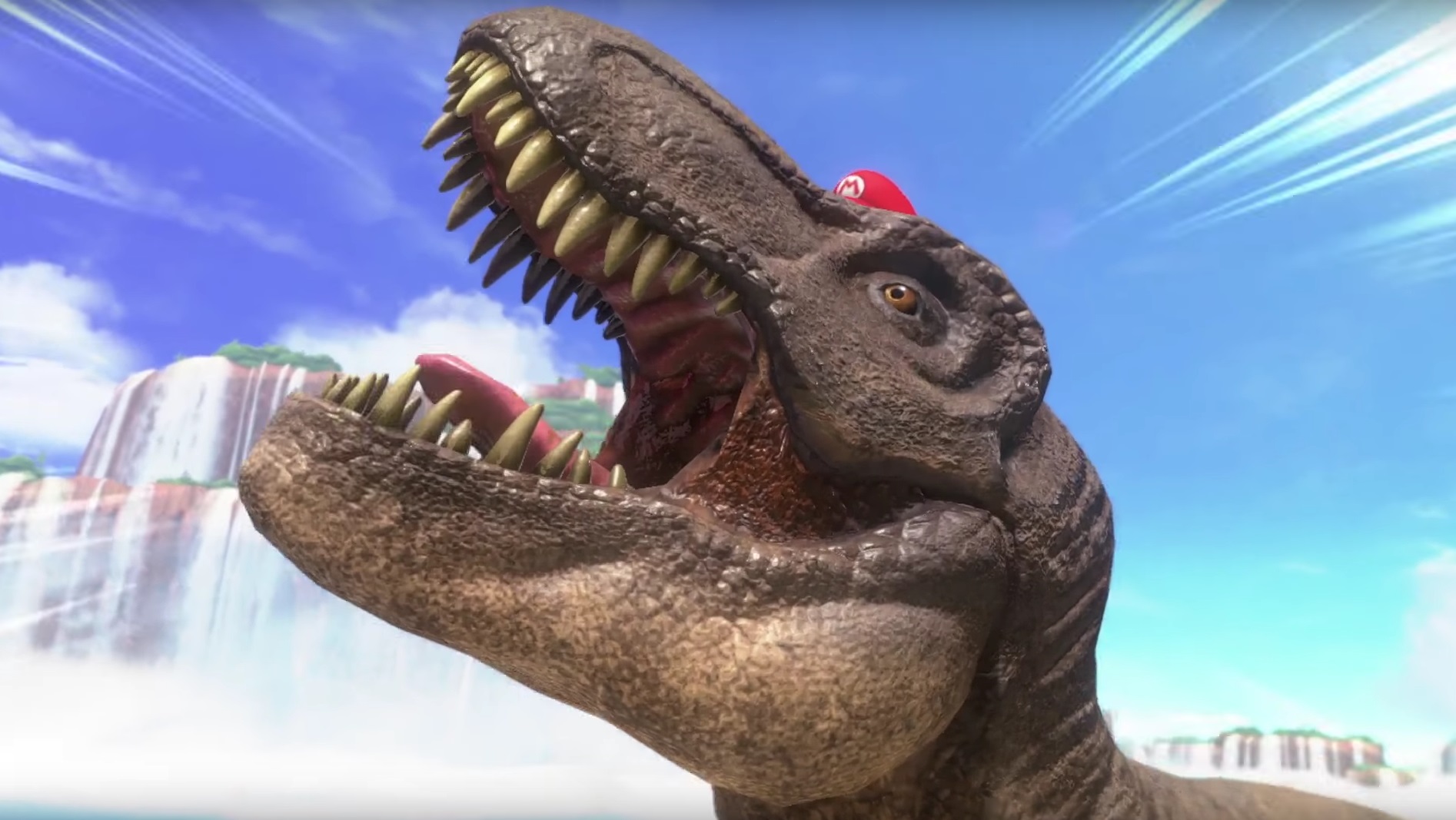 The hat, which you throw directly ahead of you, or up, or around you (motion controls accomplish these fairly painlessly), replaces the ordinary attack. Here there is a slight stumble, as sometimes the hat is lethal to enemies, sometimes it possesses them, and sometimes it has no effect. It’s annoying to throw a hat in reflexive self-defense, only to accidentally possess a goomba. It necessitates thinking before you act, when Mario games are usually constructed so that the correct action is usually the first one you think of. That’s a minor quibble, though, and you learn the lay of the land pretty quickly.
The hat, which you throw directly ahead of you, or up, or around you (motion controls accomplish these fairly painlessly), replaces the ordinary attack. Here there is a slight stumble, as sometimes the hat is lethal to enemies, sometimes it possesses them, and sometimes it has no effect. It’s annoying to throw a hat in reflexive self-defense, only to accidentally possess a goomba. It necessitates thinking before you act, when Mario games are usually constructed so that the correct action is usually the first one you think of. That’s a minor quibble, though, and you learn the lay of the land pretty quickly.
Death is relatively frequent; you generally only have 3 hearts to lose, and as usual there’s no shortage of bottomless pits. But dying merely means losing 10 coins and starting from the nearest checkpoint. As punishments go, it’s so light I wonder why they even do it. I’ve racked up thousands of coins, so I never think twice about throwing myself off a precipice to see if there’s an invisible platform or secret world hidden in the abyss.
Odyssey is in close competition with Zelda to be the best-looking game on the system, and like that game it is because of art direction and attention to detail, not pure graphical prowess (a resource on which the Switch is rather short). The textures of characters and objects have been given especial attention — the slight fluff of a cloud you hop on, the peach fuzz covering Bowser (weird, but it works), the many costumes, flora, and fauna of the worlds you visit.
Each seems to have its signature visual elements, and none is merely “forest” or “snowy”: The forest is an overgrown industrial facility, for instance, juxtaposing rusty metal and stuck mechanisms with streams and flowers.
While each world is new, each also has recurring features, such as the hat shop and some moons with similar methods of acquisition. There are subtler throwbacks as well that longtime Mario players will recognize from the last few decades: characters, theme songs, and general situations that hearken back most frequently to the 2D Marios. Finding and recognizing these nods gives one a warm fuzzy feeling. (There’s a SNES nod in that last sentence, too.)
But none of these are the reason Odyssey is so good.
Never stop discovering
The leads on the Odyssey team wrote a letter that accompanied my review copy of the game. It reads in part:
For this game, we chose to focus on the rather tricky feeling of surprise as our theme, and spent countless hours in discussions and on production. It’s said that you can’t surprise someone with the same thing twice. That’s why we’ve worked to fill Super Mario Odyssey with as many surprises as possible, so that people can play and experience a Mario game that they’ve never seen before.
Throughout development on the game, we imagined the look of surprise players will have when they actually come to play.
With design statements like this, one can never be sure if it’s the usual Nintendo “we hope you will enjoy this” palaver that accompanies nearly every game, or a genuine choice informing the fundamental basis of the gameplay. I am pleased to say that this time it is most certainly the latter.
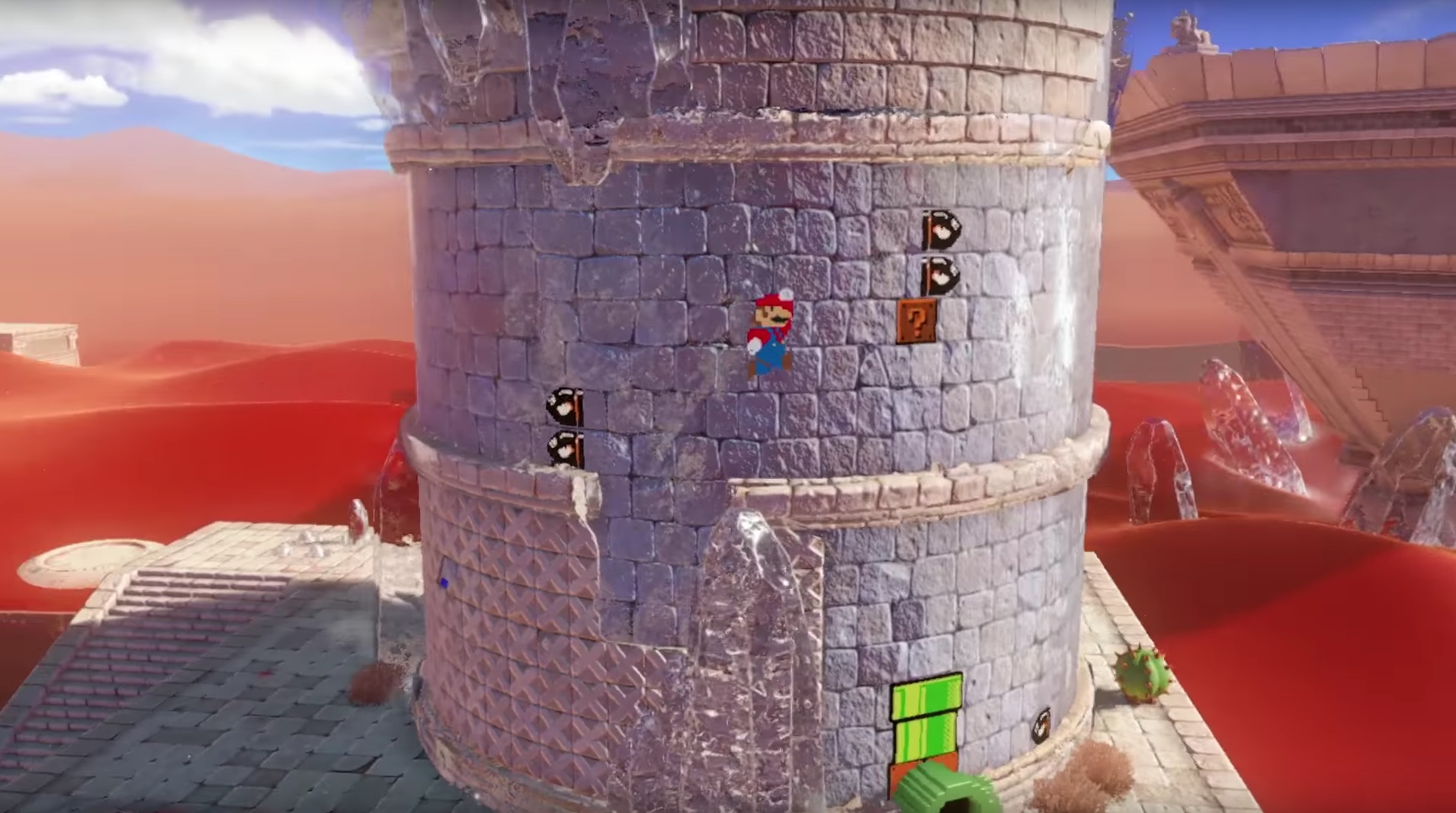 Odyssey, like its namesake hero Odysseus, is a game “of twists and turns” (as Fagles renders πολύτροπον). For this reason I’m avoiding talking about specifics, since it’s true that much of the joy of the game is in discovering those twists and turns for the first time.
Odyssey, like its namesake hero Odysseus, is a game “of twists and turns” (as Fagles renders πολύτροπον). For this reason I’m avoiding talking about specifics, since it’s true that much of the joy of the game is in discovering those twists and turns for the first time.
The game is constantly tricking you, but never in a malicious way. Everywhere you go, just out of sight, are coins, moons, and secret worlds. It’s amazing how prescient Nintendo’s level designers were, predicting exactly how players would move, how they would look around, what they would see and how they would pursue it. They predict every action, then hide something from you when you take it. I can’t tell you how many times I did something, thinking “there’s no way they could have known I’d make it up here like this,” only to be pleasantly contradicted.
Every time I found a new creature or object to possess, I reveled in the fun the designers packed into it, the joy of stretching or shooting in some direction, or swimming freely, or raining down destruction. Every time I found myself on a 2D Mario plane navigating a level hidden in the side of a building, I wondered how I’d walked past it before without noticing.
Every aspect of the game, down to the smallest details, feels crafted — placed deliberately to draw your attention, either to distract you, guide you, or both. And wow did they craft a lot of it.
The density with which every world is packed with fun details, secret coins, hidden minigames, easter eggs, and so on makes them feel larger than they are, and they’re by no means small.
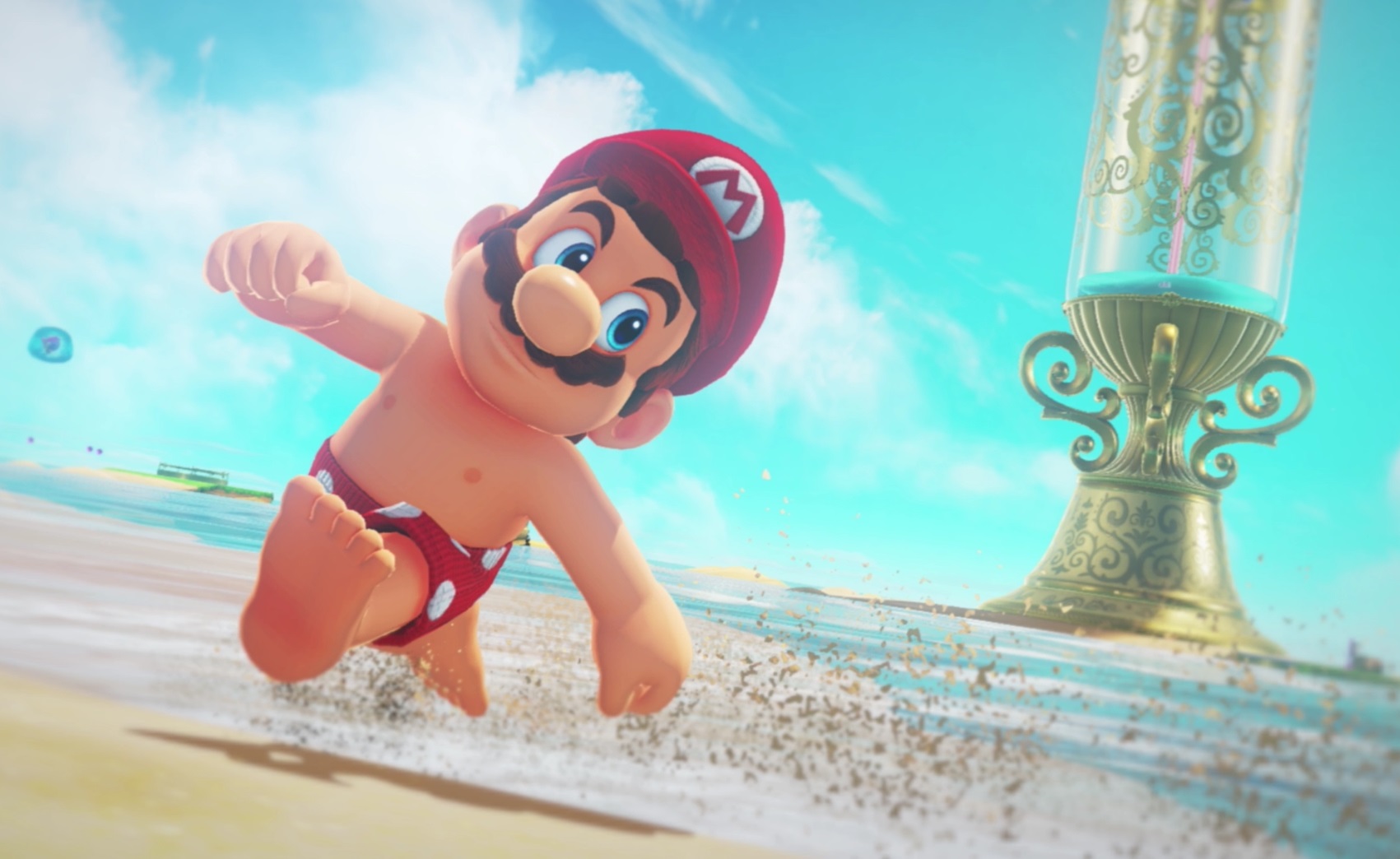 One of the earliest worlds you encounter is a desert, and I spent quite a while exploring it, finding coins and moons all over the place; a set of “phantom” moons in the top left indicate how many you need to move on to unlock another world, though at first I thought it was how many moons were in the whole place. I was pleased, then, when I found a couple in addition to the 12 or so I’d filled in. I left the desert world with perhaps 24 or 25 moons under my belt, thinking I’d probably more or less cleaned the place out except for a few I’d seen around and would come back for.
One of the earliest worlds you encounter is a desert, and I spent quite a while exploring it, finding coins and moons all over the place; a set of “phantom” moons in the top left indicate how many you need to move on to unlock another world, though at first I thought it was how many moons were in the whole place. I was pleased, then, when I found a couple in addition to the 12 or so I’d filled in. I left the desert world with perhaps 24 or 25 moons under my belt, thinking I’d probably more or less cleaned the place out except for a few I’d seen around and would come back for.
An hour later or so, I found that there’s a screen that lists the available moons for each stage (though not their names or locations, obviously). I hadn’t found all the moons in the desert by a long shot. Less than half, in fact.
I had trouble comprehending this for a bit. Where could they be? How could I have failed to notice dozens of the main goals of the game as I scoured the desert? Just now I opened the game for a minute to grab a few screenshots, and found three moons just while getting to a good vista and adjusting the camera.
By my estimation, I’m about two thirds of the way through the game — another handful of worlds to come before the inevitable showdown with Bowser. I haven’t finished because I’m enjoying myself, and because the game’s density makes it more suitable for shorter sessions than marathon ones. Pop in, get a few moons, head out. Some levels are busier than others: the wide-open desert seems quietly pregnant (now) with secret moons, while in New Donk City the streets are crowded with open doors and minigames proudly promising moons to all comers. But each feels as carefully assembled as the last.
Finally, Nintendo has imbued, in its inimitable way, the entire world with a gentleness and positivity that make the game suitable for all ages and all gamers. You will fail, but you’ll fail trying, with Nintendo cheering you on. There is little violence and that cartoonish; ultimately, Odyssey isn’t an action game but an explore-em-up with action elements. You are most frequently challenged to find things that would have eluded a less searching eye; you are to follow your instincts when they tell you it’s worth climbing that tree, or possessing that critter, or going behind that broken wall, because it almost always is.
If there’s a criticism to be made, it’s that going through the game for the second or third time may not be as fun as the first, since the thrill of discovery is so crucial to the experience. But there are few games of that can’t be said. On a more abstract level, I only worry that the game is too well designed to be broken in the ways Mario 64 has been; the worlds are open, but they are meticulously balanced so that little is possible outside of the (admittedly myriad) actions their creators envisioned being done in them. We’ll know soon as speedrunners start poking and prodding at them.
Super Mario Odyssey outdoes its spiritual predecessor in many ways, which is high praise when that predecessor is one of the best-loved games of all time. Anyone who owns a Switch should have it, and anyone who doesn’t own a Switch already has yet another really, really good reason to get it.
